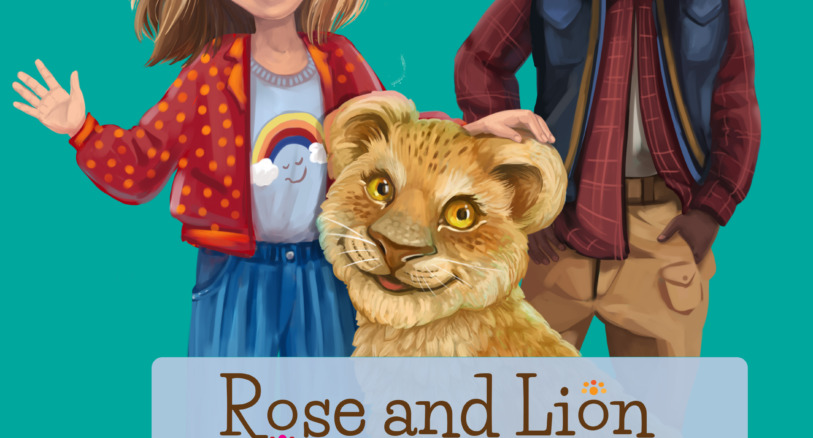Kids are natural leaders. They’re eager to take charge and help others — as long as they feel as though they’re doing a good job. Give them the right opportunity, and kids will happily organize a game, ask questions that encourage others to speak up, or perform tasks without being prompted. Unfortunately, most adult-led activities for young children tend to be rather prescriptive in terms of how much leadership is required. While these activities are undoubtedly great fun and get everyone acquainted with each other quickly, they don’t give the kids much scope for leadership. Rather than focus on what we can do with children, why not discover more about who they are? Let your future leaders step up with these eight fun activities for young kids that are easy to put together.
Ball Toss
Use this to encourage (1) Setting goals and (2) Being OK with Making Mistakes (Missing the Target)
Need to get kids moving? This activity involves a lot of throwing, but it’s easy to adapt. You can use tennis balls, soft sponge balls or bean bags, and you can either throw them at a target or have the kids catch. Start out with a very short distance and then increase the distance as the kids get used to it.
What to do: Give everyone a ball and a target to aim for. (A paper plate could work as a target). Start with a fairly close distance, so kids can hit the target 100% of the time. Kids will naturally try to make this harder by seeing what happens if they step back and keep throwing. (If not, you can ask how far away they think they could stand and make the target. Mark this distance with a piece of painter’s tape or some other item).
Variation with more parental involvement: Move each child one body length away from the target and have the child make 5 throws. How many did they make? Once they can hit the target consistently (4 of 5 times), move back another body length. Repeat to increase the distance as they are getting more accurate. See if they can make their goal distance. Reinforce how the activity is more fun when the goal is harder to reach (it gets too easy when they are close to the target and hitting it 100% of the time). And also notice how it’s fun when they miss some of the throws – anything above about 50% accuracy is still fun. This encourages kids to keep trying when things are hard.
Why measure in body lengths? This makes an even playing ground for kids of different ages and sizes. Smaller kids may have a shorter distance to throw than a tall kid, but might be throwing 3 body lengths for his size while the taller kid is only throwing 2 for her size.
Option: Try starting with a target of about chest-high and then gradually lower it as the kids get more advanced. Or place the target on the ground.
Pizza Slice Decorating
Use this to encourage (1) Curiosity and (2) Making Decisions
Kids love to get creative, and this is the perfect activity for them to do just that. You’ll need some mini pizza crusts or pita (or even some slices of white bread), a jar of pizza sauce (or marinara), and shredded cheese. Add in a few other toppings if you want — sliced olives for eyes, strips of red pepper for a mouth or whiskers, etc.
What to do: Spread the sauce over the crust, sprinkle the cheese on top and add toppings. It’s fun to make pizza “art” – like a poké ball or a cat face – and it’s also fun to get creative with toppings (hey, some people like scrambled eggs + potatoes on pizza!). Put the slices on a tray in the oven on a low heat until the cheese has melted and is starting to brown.
Variation: You can also do this with a bagel, using cream cheese instead of pasta sauce and any toppings you like.
Variation: You can experiment with adding too much sauce or cheese or too many toppings – at what point does the pizza get soggy?
Ask your child to share how they think it looks and how it tastes. Ask: Does how it looks change how it tastes?
Acting it Out Activity
Use this to encourage (1) Empathy and (2) Creative Expression
This is a great way to get kids thinking about feelings. You’ll need two bowls, some sheets of paper that could be torn into strips and some pens or colored pencils.
What to do: Each player makes two lists. Write out a list of 5 emotions/feelings and a list of 5 descriptions of people’s roles (basketball player, grandpa, toddler). Put the emotions in 1 bowl and the descriptions in another. The 1st player pulls 1 emotion from the emotion bowl and 1 role from the role bowl. Then they act out the combination. For example, basketball player in love, grandpa feeling angry, toddler acting silly. The viewers guess the emotion and description- and bonus is given if they can explain how they would respond to the character in real life (eg, make faces at the toddler to get her to laugh, ask grandpa why he’s angry, help the basketball player). You may want to give them a few examples to get them going, but let them be creative and come up with their own ideas. This is a great way to get kids thinking about their feelings and expressing them with their bodies.
Variation: You can start- or end – with very silly things like “an old woman who feels like she has to go to the bathroom.” This doesn’t encourage kids to identify emotions, but it’s fun and it encourages observation – and noticing how someone is feeling or acting is the first step of empathy.
Connected “Capture the Flag” Game
Use this to encourage (1) Teamwork and (2) Friendly Competition
This is a twist on the classic “capture the flag” game. You’ll need two flags or some other pieces of “flags” (maybe two large stuffed toys), two teams, a large space, and a lot of running around.
What to do: Set up two “flags” in opposite sides of the playing area and then set up a team on each side. The goal is the capture the “flag” from the other team. The twist is that the team has to stay connected together at all times (that’s the instruction, but let them figure out what that means for them – they might find a rope, hold hands, grab each other’s shirts, etc). If they disconnect, they have to run back to their starting point and begin again. It’s okay to try to break the connection of the other team to make them start over – but will it be worth it? Give each team two minutes to determine their strategy. Then give five minutes to “capture” the other team’s flag. This is a very energetic game, but it’s great for getting the kids moving and getting to know each other better.
Big Jump Game
Use this to encourage (1) Collaboration (2) Observation and (3) Problem Solving
You’ll need a large space and a lot of space for the kids to jump. This can be indoors or outdoors.
What to do: Divide the kids into pairs. Have them stand next to each other and then have them jump together. The aim is to jump as far as they can – both landing at the same distance away from the starting point. This is a great game to get the kids trying to work together. They’ll try different ways of “jumping” – like a running leap – and probably watch to see how other pairs are handling the jump.
Variation: Set a “finish line” and tell them to get creative about how to “jump” to the finish line with only one set of feet on the ground at a time. Each person can only touch the ground once between the starting line and finish line. (One solution would be to leap frog).
Hot Bean Bag Toss
Use this to encourage (1) Collaboration (2) Problem Solving Under Pressure and (3) Perseverance
The bean bag toss is a classic game that kids love – but this one has a twist! You’ll need a large space (such as a lawn or a field), some bean bags or soft balls, and something to mark out the goal area – like a few cones.
What to do: Set up the cones as a goal area. The objective is to get as many bean bags into the goal as possible in 1 minute. Line the kids up and give each one a bean bag. The bean bag is “hot” and will “explode” if it hits the ground. Kids can’t hold it for more than 2 seconds. If it falls on the ground, they have 2 seconds to pick it up (or it “explodes” and can’t be used). Do this game several times to see how kids will adapt to the challenge to get more bean bags into the goal. This is a great game for kids of any age, so long as they’re old enough to throw and catch the bags properly.
Toy Obstacle Races
Use this to encourage (1) Competition (2) Creativity and (3) Adaptability
Most kids love competing, and this activity gives them ample opportunity to do so. You’ll need a bunch of random toys, balls, some ribbon / string or painters tape, and some chairs or boxes to hop over.
What to do: Tell the kids that they’re going to set up an obstacle course that they will need to be able to roll a ball through. Mark out a boundary with string or tape. Then, have them set up an obstacle course with toys. Add some extra obstacles like chairs or boxes. Then, each kid will need to roll a ball from start to finish without going out of bounds – make it harder by telling them they can’t use their hands to roll the ball. (If they go out of bounds, they can start over). Then, repeat the activity by asking them to set their own rules (eg, you have to get the ball to go over X obstacle). The winner will be the first person to go around or through all the obstacles. Note that this is a competitive activity, so kids may become upset if they lose. Keep an eye on them, and make sure everyone has fun.
Conclusion
Kids are like sponges: they soak up everything around them and want to learn more and more. If you’re looking to engage with your kids and inspire them, try out the activities above. They are all easy to put together, and they can be adapted to suit kids of all ages and interests.




2 Comments
Comments are closed.